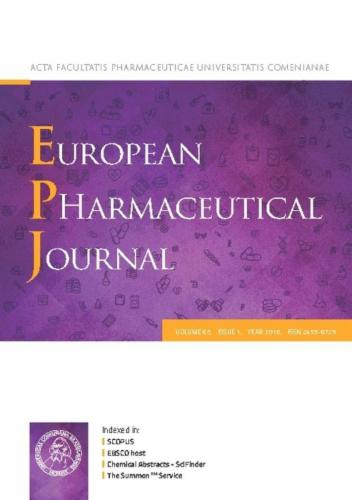Duloxetine's potential dual antitumor and immunomodulatory role in apoptosis and autophagy signaling pathways in cancer: In Vitro and In Vivo evidence
IF 4.7
3区 医学
Q1 PHARMACOLOGY & PHARMACY
引用次数: 0
Abstract
Background
Cancer remains the second leading cause of mortality worldwide, underscoring the urgent need for novel therapeutic strategies. Drug repurposing is an effective strategy to address current cancer challenges, such as the resistance and toxicity associated with traditional chemotherapy. Among the various psychotropic drugs, antidepressants are emerging as promising candidates due to their demonstrated anticancer activity.
Methods
We evaluated duloxetine (DUL), a serotonin-norepinephrine reuptake inhibitor, for anticancer and immunomodulatory activity by performing comprehensive in vitro and in vivo experiments. In HCT116 (colon), HeLa (cervical), and MDA-MB-231 (triple-negative breast cancer) human cancer cells, and 4T1 mouse breast cancer cells, we investigated DUL’s cytotoxicity, apoptosis, autophagy, cell cycle arrest, and migration inhibition through MTT assay, flow cytometry, and immunofluorescence methods. An orthotopic mouse model of breast cancer was utilized to investigate the in vivo tumor inhibitory effects of DUL, along with its systemic toxicity and immunomodulatory properties. Gene expression (p53, Beclin-1), cytokine profile, and CD3+ T cell activation were examined by mRNA sequencing and ELISA kits to explore underlying mechanisms.
Results
For the first time, our in vitro results indicated that DUL caused dose-dependent cytotoxicity, apoptosis, autophagy, and cell cycle arrest in all cancer lines tested, which was more selective than 5-fluorouracil (5-FU). Mechanistically, DUL modulated apoptotic (Bcl-2, Bax, caspase-3), autophagic (p62), and survival (pAkt) signaling, disrupted mitochondrial membrane potential, and inhibited cell migration. In vivo, DUL inhibited tumor growth without inducing hepatic or renal toxicity. Notably, DUL stimulated the production of pro-inflammatory cytokines (IFN-γ, IL-1β, TNF-α), enhanced the immunity of CD3+ T cells, and increased the expression of pro-apoptotic p53 and autophagic Beclin-1 genes, reflecting its dual antitumor and immunomodulatory actions.
Conclusion
Our findings revealed for the first time that DUL is a promising repurposed drug for cancer treatment, as it has demonstrated proven antitumor efficacy and immune-stimulating properties. This novel dual role of DUL warrants further investigation in clinical oncology.

度洛西汀在肿瘤细胞凋亡和自噬信号通路中的潜在双重抗肿瘤和免疫调节作用:体外和体内证据。
背景:癌症仍然是全球第二大死亡原因,强调迫切需要新的治疗策略。药物再利用是解决当前癌症挑战的有效策略,例如与传统化疗相关的耐药性和毒性。在各种精神药物中,抗抑郁药因其抗癌活性而成为有希望的候选药物。方法:我们通过全面的体外和体内实验来评估度洛西汀(dulloxetine,一种5 -羟色胺-去甲肾上腺素再摄取抑制剂)的抗癌和免疫调节活性。在HCT116(结肠癌)、HeLa(宫颈癌)、MDA-MB-231(三阴性乳腺癌)人癌细胞和4T1小鼠乳腺癌细胞中,我们通过MTT法、流式细胞术和免疫荧光法研究了DUL的细胞毒性、凋亡、自噬、细胞周期阻滞和迁移抑制。利用原位乳腺癌小鼠模型,研究了DUL的体内肿瘤抑制作用,以及其全身毒性和免疫调节特性。通过mRNA测序和ELISA试剂盒检测基因表达(p53, Beclin-1),细胞因子谱和CD3+ T细胞活化,以探索其潜在机制。结果:我们的体外实验结果首次表明,在所有测试的癌细胞系中,DUL引起剂量依赖性的细胞毒性、细胞凋亡、自噬和细胞周期阻滞,其选择性比5-氟尿嘧啶(5-FU)更强。在机制上,DUL调节凋亡(Bcl-2, Bax, caspase-3),自噬(p62)和存活(pAkt)信号,破坏线粒体膜电位,抑制细胞迁移。在体内,DUL抑制肿瘤生长而不引起肝或肾毒性。值得注意的是,DUL刺激了促炎细胞因子(IFN-γ、IL-1β、TNF-α)的产生,增强了CD3+ T细胞的免疫力,增加了促凋亡p53和自噬Beclin-1基因的表达,反映了其抗肿瘤和免疫调节的双重作用。结论:我们的研究结果首次揭示了DUL是一种很有前途的癌症治疗药物,因为它已被证明具有抗肿瘤功效和免疫刺激特性。这种新的双重作用的DUL值得进一步研究在临床肿瘤学。
本文章由计算机程序翻译,如有差异,请以英文原文为准。
求助全文
约1分钟内获得全文
求助全文
来源期刊
CiteScore
9.60
自引率
2.20%
发文量
248
审稿时长
50 days
期刊介绍:
The journal publishes research articles, review articles and scientific commentaries on all aspects of the pharmaceutical sciences with emphasis on conceptual novelty and scientific quality. The Editors welcome articles in this multidisciplinary field, with a focus on topics relevant for drug discovery and development.
More specifically, the Journal publishes reports on medicinal chemistry, pharmacology, drug absorption and metabolism, pharmacokinetics and pharmacodynamics, pharmaceutical and biomedical analysis, drug delivery (including gene delivery), drug targeting, pharmaceutical technology, pharmaceutical biotechnology and clinical drug evaluation. The journal will typically not give priority to manuscripts focusing primarily on organic synthesis, natural products, adaptation of analytical approaches, or discussions pertaining to drug policy making.
Scientific commentaries and review articles are generally by invitation only or by consent of the Editors. Proceedings of scientific meetings may be published as special issues or supplements to the Journal.

 求助内容:
求助内容: 应助结果提醒方式:
应助结果提醒方式:


